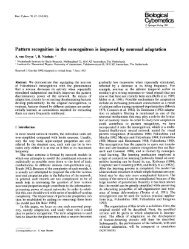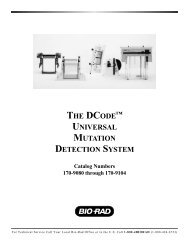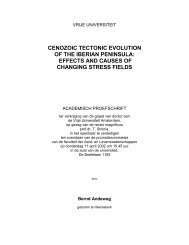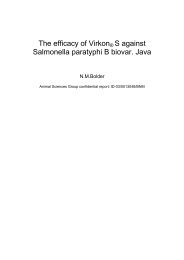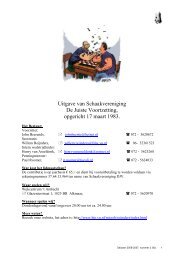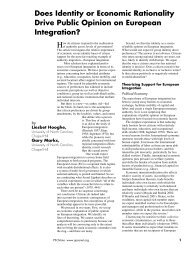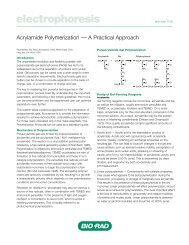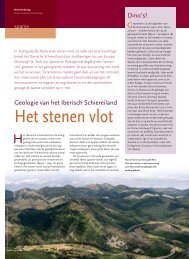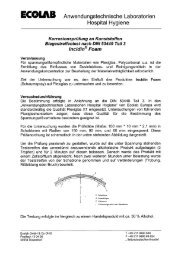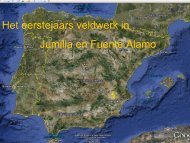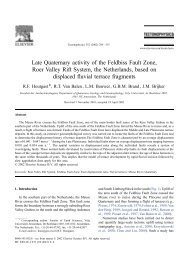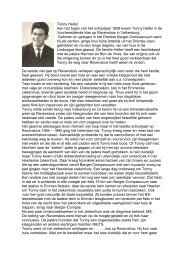5 NATURAL ABUNDANCE OF THE STABLE ISOTOPES ... - Falw.vu
5 NATURAL ABUNDANCE OF THE STABLE ISOTOPES ... - Falw.vu
5 NATURAL ABUNDANCE OF THE STABLE ISOTOPES ... - Falw.vu
Create successful ePaper yourself
Turn your PDF publications into a flip-book with our unique Google optimized e-Paper software.
Chapter 7oceanic air far removed from continental influences and occurs in combination with minimalCO 2 concentrations. More negative 13 values are found in continental air and are due to anadmixture of CO 2 of biospheric and anthropogenic origin ( 13 25‰), in part from thedecay of plant material, in part from the combustion of fossil fuels (Keeling, 1958; Mook etal., 1983).7.1.4.2 SEAWATER AND MARINE CARBONATEAtmospheric CO 2 appears to be nearly in isotopic equilibrium with the oceanic dissolvedbicarbonate. The 13 (HCO 3 ) values in the ocean are about +1 to +1.5‰, in agreement withthe equilibrium fractionation g/b at temperatures between 15 and 20 C (Table 7.2).According to the fractionation s/b we should expect calcite slowly precipitating in equilibriumwith oceanic bicarbonate to have 13 values of +2.0 to +2.5‰. This is indeed the normal rangefound for recent marine carbonates. Mook and Vogel (1968) observed this isotopicequilibrium between marine to brackish-water shells and dissolved bicarbonate in the water.7.1.4.3 VEGETATION AND SOIL CO 2Plant carbon has a lower 13 C content than the atmospheric CO 2 from which it was formed.The fractionation which occurs during CO 2 uptake and photosynthesis depends on the type ofplant and the climatic and ecological conditions. The dominant modes of photosynthesis giverise to strongly differing degrees of fractionation (Lerman, 1972; Throughton, 1972). TheHatch-Slack photosynthetic pathway (C 4 ) results in 13 figures of 10 to 15‰ and isprimarily represented by certain grains and desert grasses (sugar reed, corn). In temperateclimates most plants employ the Calvin mechanism (C 3 ), producing 13 values in the range of26 3‰. A third type of metabolism, the Crassulacean Acid Metabolism (CAM) produces alarge spread of 13 values around 17‰ (Deines, 1980).The CO 2 content of the soil atmosphere can be orders of magnitude larger than that of the freeatmosphere. The additional CO 2 is formed in the soil by decay of plant remains and by rootrespiration and consequently has 13 values centring around 25‰ in temperate climateswhere Calvin plants dominate.7.1.4.4 FOSSIL FUELAs complicated biogeochemical processes are involved in the degradation of terrestrial andmarine plant material ultimately into coal, oil, and natural gas, the range of 13 values of thesefossil fuels is larger, extending to more negative values, especially of biogenic methane(Fig.7.5). The global average of CO 2 from the combustion of these fuels is estimated to beabout 27‰.98



